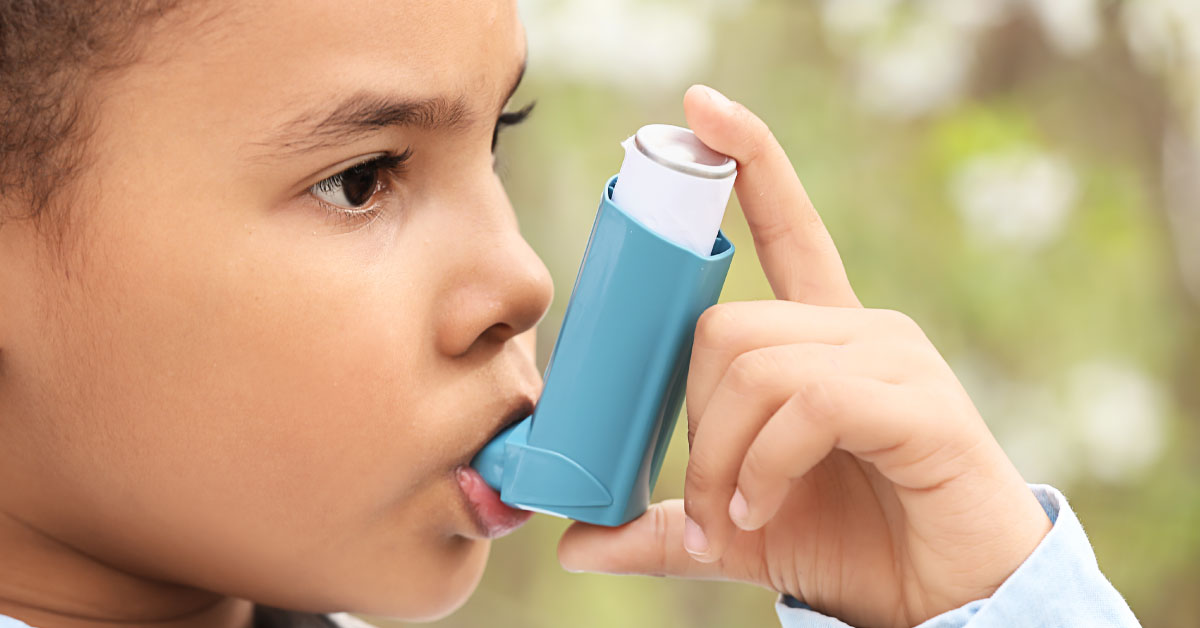Asthma in Children

For children with asthma, this is a tough time of the year. The spread of respiratory illnesses in school, the change in temperature, and exposure to various seasonal allergens can all trigger asthma in children, which can cause missed school days and trips to the emergency room in Corpus Christi. As much as it’s tough for the kids, it is difficult for parents, too.
According to the CDC, asthma is the leading chronic lung disease in children, and it affects about 6 million kids ages 0-17 years in the United States.
Asthma has no cure, but with the right management and treatment, it is very possible to keep your child’s symptoms under control and prevent causing permanent damage to their lungs.
Overview
Asthma causes inflammation in the airways when exposed to specific triggers, making them narrow and hard to breathe through. Asthma causes coughing and wheezing and may make it difficult for the child to do certain activities like play, sleep, and engage in sports. If unmanaged, it may lead to dangerous asthma attacks.
The bronchial tubes or airways are responsible for transporting air to and from the lungs. Children’s bronchial tubes are already small and narrow as it is, and when inflamed by asthma, these airways become even more narrow.
Symptoms
Asthma symptoms can vary from nighttime coughs to severe medical emergencies. The signs include:
- Wheezing
- Frequent coughing, especially at night
- Chest tightness or congestion
- Rapid or troubled breathing
If you notice that the symptoms are occurring regularly or repeatedly, it is time to consult with your doctor.
Asthma causes and risk factors
There are certain factors that increase asthma risk. These include:
- Genetics
- Exposure to secondhand smoke
- Medical conditions like obesity and allergies
- Frequent respiratory infections
- Gender. Asthma is more common in younger boys and teenage girls
Asthma triggers
Asthma triggers vary but may include the following:
- Mold
- Dust mites
- Waste from household pets
- Pollen
- Certain medications
- Cold air
- Outdoor air pollution
- Cigarette smoke
- Infections like the cold and flu
When to see a doctor
If you suspect that your child has asthma, take him or her to see a doctor right away. Remember, early detection can prevent attacks and help manage symptoms.
Take your child to the doctor if you notice the following:
- Constant coughing
- Wheezing
- Chest tightness
- Rapid breathing or shortness of breath
- Recurring bouts of pneumonia or bronchitis
When to take your child to the emergency room
During severe cases – when your child is struggling to breathe – take him or her to the emergency room right away. Go to your nearest emergency room if:
- Your child is using his or her abdominal muscles to breathe
- Has to stop in midsentence to catch his breath
- Your child is experiencing chest pain coupled with a rapid heartbeat
- Has widened nostrils when breathing in
If you notice any of these symptoms, even if your child has not been diagnosed with asthma, take him or her to your emergency room in Corpus Christi right away. Asthma episodes vary in intensity and may start with coughing and progress to wheezing and labored breathing.
Sources:
“Asthma in children,” Centers for Disease Control and Prevention, https://www.cdc.gov/vitalsigns/childhood-asthma/index.html
“Pediatric Asthma,” National Library of Medicine, https://www.ncbi.nlm.nih.gov/books/NBK551631/
“Asthma in children,” Better Health Channel, https://www.betterhealth.vic.gov.au/health/conditionsandtreatments/asthma-in-children
“Asthma Symptoms,” American College of Allergy, Asthma & Immunology, https://acaai.org/asthma/symptoms/


